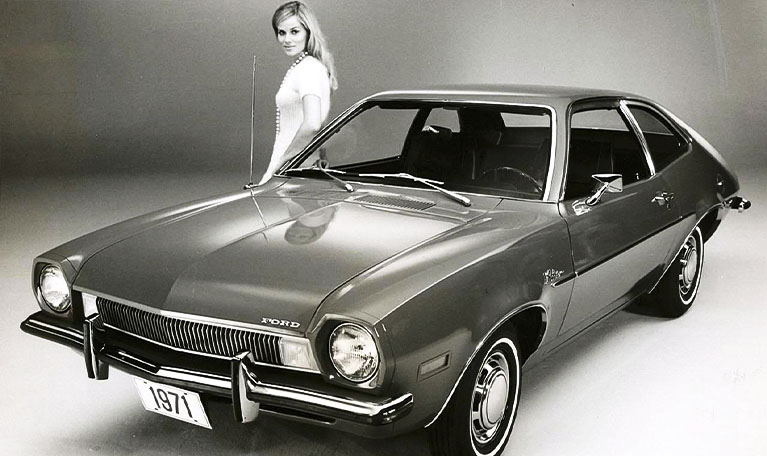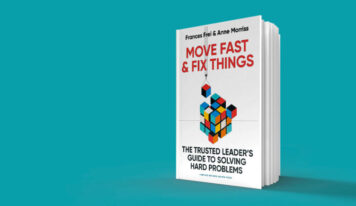The management model, based on defining key objectives and outcomes, is used as a guide by large companies such as Google, Intel, and Intuit, and by organizations such as the Gates Foundation
Central ideas:
1 – OKRs (Objectives and Key Results) contain the Goal (O), which is simply what should be achieved in a company or organization. KRs establish how to reach the goal. They are specific, time-limited tasks. Above all, measurable and verifiable. Andy Grove created the OKRs in the management of Intel.
2 – The more ambitious the OKR, the greater the risk of overlooking a vital criterion. To protect the quality and boost quantitative results, one solution is to combine the key results, i.e. both the effect and the opposite effect.
3 – Focused, transparent OKRs link the work of each individual to team efforts, departmental projects, and the overall mission. In the workplace, we are curious about what leaders do and how our work fits into theirs. OKRs serve this alignment.
4 – Most goal management platforms use visuals to show progress toward objectives and key results. Regular check-ins, preferably weekly, are essential to prevent accidental deviation.
5 – As smooth as it sounds, saying thank you is an extraordinary tool for building an engaged team. Companies with high levels of recognition have 31% lower employee turnover than companies with weak recognition cultures.
About the author:

John Doerr is an engineer, acclaimed venture capitalist, and chairman of Kleiner Perkins. He was an original investor and advisor to Google and Amazon, helping create over half a million jobs and the second and third most valuable companies in the world.
Long before Gmail, Android, or Chrome, Google was full of great ideas. The founders were visionaries par excellence, with extreme entrepreneurial energy. What they lacked was management experience. For Google to have a real impact or even take off, they would have to learn to make tough choices and keep their team on track. Given their healthy appetite for risk, they would need to get out of “loser” mode directly into “rapid failure detection” mode.
No less important would be the demand for timely and relevant data. To record their progress, to measure what mattered.
And then: on that balmy day in Mountain View, I arrived with my gift to Google. It would be a sharp tool for world-class tasks. I first used it in the 1970s, as an engineer at Intel. There, Andy Grove, the greatest manager of his time, or any time, ran the best-run company I had ever seen in my life. Since I had joined Kleiner Perkins, the Menlo Park venture capital firm, I had been around 50 or so companies spreading Grove’s idea.
Larry and Sergey, along with Marissa Mayer, Susan Wojcicki, Salar Kamangar, and 30 or so others, pretty much the entire company at the time, gathered to hear me out. I started by explaining what OKRs are, an acronym for Objectives and Key Results. An OBJECTIVE (O), I explained, is simply WHAT should be achieved. No more and no less. By definition, objectives are meaningful, concrete, action-oriented, and (ideally) inspiring. When properly designed and implemented, they are a vaccine against muddled thinking and execution.
KEY RESULTS (KRs) establish and monitor HOW we get to the goal. Effective KRs are specific and time-bound, aggressive but realistic. Above all, they are measurable and verifiable.
My goal that day, I told the googlers, was to build a planning model for the company, measured by three main outcomes:
KR #1: I would finish my presentation on time.
KR #2: We would create a sample set of Google’s quarterly OKRs.
KR #3: I would gain managerial consent for a three-month test of OKRs.
I interrupted my speech at the right time.
Now the ball was with Google.
Andy Grove, the father of OKRs. Intel was Andy Grove’s laboratory for management innovation. He loved teaching and the company welcomed the benefits. A few days after I was hired, I received a coveted invitation to Intel’s Organization, Philosophy, and Economics course, known as iOPEC. Basically, it was a seminar on Intel’s strategy and operations. Teacher: Andy Grove.
Expertise was highly valued at Fairchild [Grove’s previous company], Andy explained. “That’s why people were hired and that’s why they were promoted. Their effectiveness in translating that knowledge into real results was disposable.” At Intel, he continued, “we tend to do the exact opposite. It almost doesn’t matter what you know. We tend to value here what you can do with what you know or can achieve and actually accomplish.” Hence came the company’s slogan: “Intel delivers.”
In 1975, when I arrived at Intel, Grove’s OKRs system was in full swing. Every knowledge worker in the company had already formulated individual goals and key results. Shortly after the iOPEC seminar, my supervisor directed me to do the same. I was delegated to work writing benchmarks for the 8080, Intel’s latest entry into the 8-bit microprocessor market, in which the company reigned supreme. My goal was to show how our chip was faster and generally beat the competition.
Throughout the Andy Grove era, the OKRs were the lifeblood of Intel. They were front and center in weekly meetings, bi-weekly team meetings, monthly and quarterly division reviews. This is how Intel managed tens of thousands of people in marking a million lines of silicon or copper with the precision of a millionth of a meter. Semiconductor manufacturing is a tough business. Without rigor, nothing works; yields plummet, chips fail. The OKRs were constant reminders of what our teams needed to be doing. They constantly told us what we were achieving and what we were not.
Superpowers. We start with the origin story of OKRs at Intel by Andy Grove. Then I introduce the four “superpowers” of OKRs: focus, alignment, follow-through, and effort.

Superpower #1: Focus and commitment to priorities
However, good ideas are not shaped by hierarchy. The most powerful and energized OKRs usually originate from frontline employees. As a product manager at YouTube, Rick Klau was responsible for the homepage of the site, the third most visited in the world. The problem: Only a small fraction of users were logging on to the site. They were missing out on important features, from saving videos to subscribing to channels. Much of YouTube’s value was effectively hidden from hundreds of millions of people around the world. Meanwhile, the company was losing invaluable data. To solve the problem, Rick’s team created a six-month OKR to improve the login experience on the site. They presented their case to YouTube CEO Salar Kamangar, who consulted with Google CEO Larry Page. Larry chose to raise the login goal to an overall Google KR, but with one caveat: the time frame would be three months, not six.
When I hear CEOs say “All my goals are team goals,” I already see this as a warning sign. Simply verbalized OKRs are not enough. The late Bill Campbell, CEO of Intuit, who would later coach Google’s executive team, used to say this, “When you’re the CEO or the founder of a company…, you need to say ‘This is what we’re going to do,’ and you then need to be the model of what you talk about, because when you’re not the model, nobody’s going to follow your instructions.”
Goals and key results are the yin and yang of goal setting: principle and practice, vision and execution. Key results are more concrete and metric. They usually include concrete numbers for one or more indicators: revenue, growth, active users, quality, safety, market share, customer engagement. For reliable progress, as Peter Drucker noted, a manager “must be able to measure performance and results against the goal.
What, how, when. Well-defined timelines intensify our focus and commitment; nothing moves us forward as much as a deadline. To win the global marketplace, organizations need to be more agile than ever. In my experience, a quarterly cadence of OKRs is best suited to keep up with today’s rapidly changing markets. A three-month horizon restricts procrastination and leads us to real performance gains.
Alignment. The Ford Pinto was an incendiary trap, and the company’s engineers knew it. Except that the company’s heavily marketed goals-“under 2,000 pounds and under 2,000 dollars”-were imposed by Iacocca “with an iron hand”… When a crash test found that a half-pound piece of plastic, the size of a dollar bill, punctured the gas tank, it was dismissed as an extra cost and weight. The Ford Pinto’s internal manual cited three product goals: “true subcompact” (size, weight); “low cost of good overall” (initial price, fuel consumption, reliability, serviceability); “express product superiority” (appearance, comfort, features, ride, handling, performance). Safety was not on the list.
After impacts to the rear of the Ford Pinto, hundreds of people died and thousands more were seriously injured. In 1978, the company paid the price with a recall of 1.5 million Ford Pinto and its sister model, Mercury Bobcats, the largest recall in automotive history. The company’s balance sheet and reputation were justifiably devastated.
If we look back, there was no shortage of key objectives or results for Ford. Its goal-setting process, however, was fatally flawed: “The specific and challenging goals were achieved (speed to market, fuel efficiency, and cost) at the expense of other important resources that were not specified (safety, ethical behavior, and company reputation).”
The more ambitious the OKR, the greater the risk of overlooking a vital criterion. To protect quality while boosting quantitative results, one solution is to combine key results, i.e., measure “both the effect and the opposite effect,” Andy Grove warns us in High-Performance Management.

Superpower #2: Alignment and connection for teamwork
Alignment is rare, unfortunately. Studies suggest that only 7% of employees “fully understand the company’s business strategies and what is expected of them to achieve common goals.” Lack of alignment, according to a survey of CEOs around the world, is the main obstacle to strategy and execution.
“We have a lot of things going on,” says Amelia Merrill, HR leader at RMS, a risk modeling agency in California. “We have people in multiple departments, multiple time zones, some doing parallel work, some working together. It’s very difficult for employees to figure out what they should work on first. Everything seems important; everything seems urgent. But what really needs to be done?”
The answer lies in focused, transparent OKRs. They link the work of each individual to team efforts, departmental projects, and the overall mission. As a species, we crave connection. In the workplace, we are naturally curious about what our leaders are doing and how our work fits into theirs. OKRs are the ideal vehicle for vertical alignment.
Fortunately, we have an alternative. Precisely because of the transparency of OKRs, they can be shared without necessarily having a cascading connection. If they serve a higher purpose, various levels of the hierarchy can be crossed. Instead of an upward movement from the CEO to a vice president, to a director, to a manager (and then to the manager’s subordinates), an objective can move from the CEO directly to a manager, or from a director to an employee. The company’s leadership can also present their OKRs to everyone at the same time and trust people to say, “Okay, now I know where we’re going and I’ll adapt my goals to that.”
Cross-disciplinary coordination. Even if a modern goal-setting successfully transcends the organizational chart, unrecognized dependencies remain the number one cause for a project to skate. The cure is lateral, interdisciplinary connectivity between colleagues and between teams. To innovate and solve problems in an advanced way, isolated individuals are no match for a connected group. A product depends on engineering, marketing, and sales. As business becomes more complex and initiatives more complex, interdependent areas need a tool to help them reach the finish line together.
Lessons from Intuit. Intuit has been on Fortune magazine’s prestigious list of the “World’s Most Admired Companies” for 14 consecutive years. The company made its first appearance in the 1980s with Quicken. The application brought personal finance to the personal computer and became a household name. Next came tax preparation software (TurboTax) and a computer accounting program (QuickBooks), which eventually moved to an online platform. Throughout its long history in technology standards, Intuit has survived one competitive threat after another, always staying one step ahead. Most recently, the company sold Quicken and rebuilt QuickBooks Online as an open platform. Subscriptions have increased by 49%. “Whenever Intuit has done one thing wrong,” UBS analyst Brent Thill tells the New York Times, “it quickly gets out of the gravel and back into the asphalt. That’s why the company has done so well for so long.”
Coach [Bill Campbell]’s legacy lives on. A few years ago, to help the IT department adapt Intuit as it moved to the cloud, Atticus introduced the OKRs to his direct subordinates. The next quarter, he moved the system to the board level and to all 600 employees in the subsequent quarter. He was determined not to force the new process. “We didn’t want bureaucratic compliance,” Atticus recounts. “We wanted enthusiastic compliance. I wanted to see if the OKR system would be successful, and it really was.”

Superpower #3: Accountability tracking
While general-purpose software can establish the operation and functioning of an OKR process, we have a problem: it doesn’t allow for scalability. When a Fortune 500 company recently tried to increase the cadence of its goal-setting, it encountered a boulder in the way. All of its 82,000 employees had obediently recorded their annual goals in Microsoft Word files. A change in quarterly OKRs would have generated 328,000 files per year. They would all be public, in theory, but who would have the patience to look for connections or alignment? If you share a goal that no one sees, is the system truly transparent?
As the level of structured goal reference increases, more organizations are adopting some robust, dedicated, cloud-based software to manage OKRs. The best platforms on the market include mobile apps, automatic updates, analytical reporting tools, real-time alerts, and integration with Salesforce, Jira, and Zendesk. In three, four clicks, users can navigate a digital dashboard to create, track, edit, and score their OKRs. These platforms deliver the transformative values of the OKR:
– They make everyone’s goals more visible. Users get continuous access to the OKRs of their boss, their direct reports, and the organization as a whole.
– They trigger engagement. When you know you’re working on the right things, it’s easier to stay motivated.
– They promote internal networking. A transparent platform turns individuals into colleagues with shared professional interests.
– They save time, money, and frustration. In conventional goal-setting, several hours are wasted searching for documentation and notes from meetings, emails, Word documents, and PowerPoint slides. With an OKR management platform, all the relevant information is ready, wherever you are.
Most goal management platforms use visuals to show progress toward goals and key outcomes. Unlike the steps on fitness wristbands, OKRs do not require daily tracking. However, regular check-ins, preferably weekly, are essential to prevent accidental deviation. According to Peter Drucker: “Without an action plan, the executive becomes a prisoner of events. And without check-ins to reexamine the plan as events unfold, the executive has no way of knowing which events really matter and which are just noise.”
Ranking. By grading our OKRs, we mark what we have achieved and address what we could do differently next time. A low score forces re-evaluation; is the goal still worth pursuing? If so, what can we change to achieve it?
On high-end platforms for managing goals, OKRs scores are generated by the system; numbers are objective and untouched by human hands (with less automated and homegrown platforms or users may need to perform their own calculations). The simplest and clearest way to rank an objective is to average the percentage completion rates of its associated key deliverables. Google uses a scale of 0 to 1.0:
– 0.7 to 1.0 = green (we delivered).
– 0.4 to 0.6 = yellow (we made progress, but fell short of completion).
– 0.0 to 0.3 = red (we failed to make real progress).
Gates Foundation. An example of using OKRs is shown by a humanitarian purpose organization, such as the Gates Foundation. Goal: the ongoing fight against the most lethal animal on the planet, the mosquito. In 2016, the Gates Foundation joined the British government in a five-year, $4.3 billion campaign to eradicate malaria, the most lethal of all tropical diseases. Driven by empirical data, they broadened the focus from a transmission-blocking vaccine to a comprehensive eradication strategy.
GOAL: global eradication of malaria by 2040.
KEY OUTCOMES:
- Prove to the world that a radical cure-based approach can lead to regional elimination.
- Prepare for scalability by creating the necessary tools: SERCAP (Single Exposure Radical Cure and Prophylaxis) diagnostics.
- Sustain current global progress to ensure that the environment is conducive to eradication.
As Bill Gates himself has recognized, this effort will not be easy. But there is a real chance of success because his team is monitoring the performance of the OKRs step by step.

Superpower no. 4: The effort for the surprising
Key results push us far beyond our comfort zones. They lead them to achievements on the border between skills and dreams. They discover new capabilities, create more creative solutions, revolutionize business models. For companies looking to live long and prosper, reaching new heights is a must. Bill Campbell liked to say this: if companies “don’t keep innovating, they will die. And I didn’t say imitate, I said innovate. Conservative goal-setting prevents innovation. Moreover, innovation is like oxygen: you can’t succeed without it.
When goals that require effort are chosen wisely, the reward more than rewards risk. “Big Hairy Audacious Goals,” Jim Collins’ memorable expression in the book Companies Made to Win (Alta Books), quickly take things to new levels:
A BHAG [Big Hairy Audacious Goal] is a giant, scary goal, like a mountain to be climbed. It is clear, gets attention, and people “get it” immediately. A BHAG serves as a focal point of unifying effort, stirs people, and creates a team spirit as people strive toward the finish line. As with NASA’s lunar mission of the 1960s, a BHAG captures the imagination and gets in people’s veins.
Intel valued those who took calculated risks. There was the place where I learned to push myself and be bold enough to fail. In Operation Crush, the kill-or-die campaign to dominate the 16-bit chip microprocessor market, the company’s salesmen were measured by successful projects and the number of products designed around our 8086 microprocessor. Led by Bill Davidow, the Operation Crush task force set one of the boldest goals I have ever seen: one thousand successful projects in a single year, 50% more than the sales recorded the previous year.
Tenfold religion. If Andy Grove is the patron saint of ambitious OKRs, Larry Page is their high priest. In technology, Google represents boundless innovation and relentless growth. In the world of goals and key results, the company is synonymous with exponentially aggressive goals. Steven Levy calls this philosophy the “tenfold religion”.
Take Gmail, for example. The main problem with previous web-based email systems was the meager storage, typically two to four megabytes. Users were forced to delete old emails to make room for new ones. Archiving things was a dream. During the development of Gmail, Google’s leaders considered offering 100MB of storage, which was a huge development. But in 2004, when the product was released to the public, the 100MB goal was killed and forgotten. Instead, Gmail provided a full gigabyte of storage, up to 500 times more than the competition. Users could store email for eternity Digital communication has changed forever.
Now that, yes, is a bold and hairy goal. Gmail did not just improve existing systems. It reinvented the category and forced competitors to increase their offerings by orders of magnitude.
A new world of work. To achieve goals almost beyond imagination, people demand management at a higher level. Our workplace communication systems are crying out for an upgrade. Just as quarterly OKRs caused the obsolescence of pro forma annual goals, we need an equivalent tool to revolutionize outdated performance management systems. In short, we need a new HR model for the new world of work. This transformative system, the contemporary alternative to annual appraisals, is continuous performance management. It is implemented with an instrument called CFR. The acronym stands for:
– Conversations: An authentic and extensively detailed exchange of ideas between the manager and the employee, with a focus on improving performance.
– Feedback: Two-way communication or networking among peers to assess progress and guide future improvements.
– Recognition: Expressions of appreciation to deserving people for contributions of all sizes.
Best of all, OKRs and CFRs are mutually reinforcing. BetterWorks CEO Doug Dennerline is the pioneer in bringing these two tools to the cloud and smartphones and helping hundreds of organizations master their own processes. “It’s the perfect marriage. A real slam dunk,” Doug tells us. “If a conversation is limited to whether or not a goal is achieved, the context is lost. It takes ongoing performance management to expose fundamental questions: did the goal get harder to achieve than you imagined when you set it? Is it the right goal to prioritize? Is it motivating? Should we double down on two or three things that really worked for us last quarter, or is it time to consider support?”. Extracting these insights throughout the organization is critical.
Ongoing recognition is a powerful driver of engagement: “As soft as it sounds, saying thank you is an extraordinary tool for building an engaged team… Companies with ‘high level of recognition’ have 31% lower employee turnover than companies with weak recognition cultures.”
OKRs platforms are customized for recognition among colleagues. Quarterly goals establish and reset the areas where feedback and recognition are most valued. Transparent OKRs make it natural to celebrate big wins and small triumphs among employees. Everyone deserves his or her share of the spotlight.
Culture change: Bono Vox. In 2004, Bono launched the One Campaign to catalyze a nonpartisan, activist, grassroots coalition. It is the external complement to the internal DATA [Debt, Aids, Transactions, Africa] game cofounded by the star.
As ONE grew, it relied on OKRs to achieve fundamental cultural change. The campaign is migrating from working on Africa to working in and with Africa. Davis Lane, the former CEO of ONE, once said this: “There has been a huge philosophical shift in the way people think about helping the developing world develop. The focus now is on enabling these countries to grow on their own. OKRs have played a key role in how we’ve done that.”
In order to improve the lives of the world’s most vulnerable people, ONE has helped deliver nearly $50 billion in funding for historic health initiatives. In 2005, alongside Bill and Melinda, Bono was named Time Magazine’s Personality of the Year.
Review: Rogério H. Jönck
Photos: reproduction, Intel, dfirecop, Intuit, Gates Foundation

FACTSHEET:
Title: Measure What Matters
Author: John Doerr
![[Experience Club] US [Experience Club] US](https://experienceclubus.com/wp-content/uploads/2021/03/laksdh.png)










![[Experience Club] US [Experience Club] US](https://experienceclubus.com/wp-content/uploads/2021/03/logos_EXP_US-3.png)





![[EXP no SXSW 2024] Rohit Bhargava: como o pensamento não-óbvio pode melhorar o mundo](https://experienceclubus.com/wp-content/uploads/2024/03/rohit-356x206.jpg)

